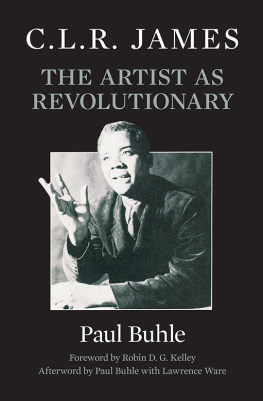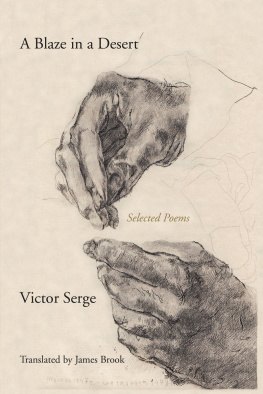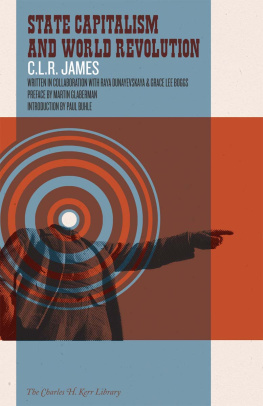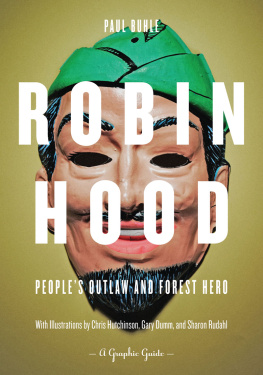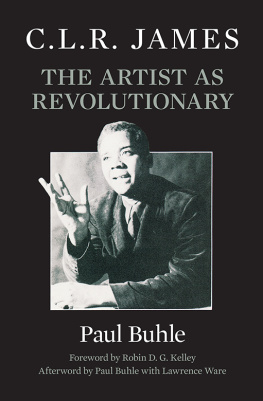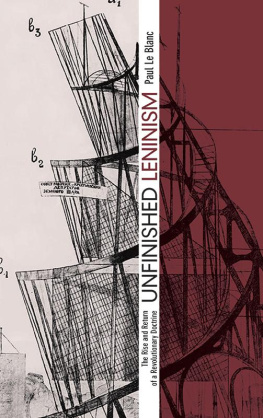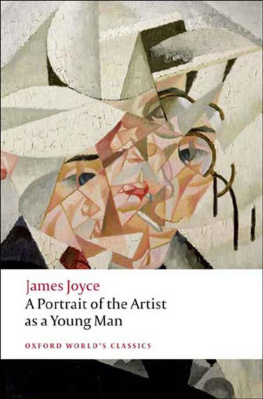C.L.R. James
Every effort has been made to determine the copyright holder of the cover photograph.
The publisher welcomes more information and will update future editions accordingly.
C.L.R. James: the artist as revolutionary / Paul Buhle.
p. cm.
Bibliography: p.
Includes index.
1. James, C. L. R. (Cyril Lionel Robert), 1901- . 2. Authors
Trinidadian20th centuryBiography. 3. RevolutionistsTrinidadBiography.
4. HistoriansTrinidadBiography. 5. Marxist criticism. 6. Pan-Africanism. 1. Title.
PR9272.9.J35Z59
818dc19
[B]
In 1980, the then eighty-year-old C.L.R. James sat down with folklorist Daryl Cumber Dance to talk about his life, writing, political work, and his lifelong fascination with cricket. Dance was thirty-two at the time, an accomplished literary scholar and oral historian known for her pathbreaking collection, Shuckin and Jivin: Folklore from Contemporary Black Americans, which Indiana University Press had released two years earlier. She was fascinated with stories, proverbs, humor, and the folk culture of the African Diaspora, and yet she understood that the fantastic and earthy world of the folk profoundly shaped the Caribbeans greatest writers. Her interview with James was one of many conversations with writers as diverse as Louise Bennett, Jan Carew, Wilson Harris, George Lamming, Earl Lovelace, Orlando Patterson, Derek Walcott, and Sylvia Wynter. She engaged James as an artist; he responded as a revolutionary. When she asked him, what would you most like to be remembered for, his reply was unequivocal: The contributions I have made to the Marxist movement are the things that matter most to me. On the whole, I like to think of myself as a Marxist who has made serious contributions to Marxism in various fields. I want to be considered one of the important Marxists.
Eight years later, Verso Books issued Paul Buhles C.L.R. James: The Artist as Revolutionary. Compact, incisive, and deeply historical, the book undeniably treats James as one of the important Marxists, if not the most important Marxist of his generation. At the same time, Buhle saw in the old man what Dance saw one of the Caribbeans preeminent writers whose contributions were not always indebted to Marxist traditions. Buhle knew James not as a divided self whose allegiances to art and politics demanded prioritization or balance. Nor was he simply an original Marxist thinker with an artistic temperament. Instead, Buhles seminal biography portrays James as a brilliant intellectual and artist who traded a life of salons and academic appointments for the trenches of proletarian revolt, Pan-Africanism, and a philosophy of praxis, while never straying too far from his love of popular culture, literature, and sport.
Published a year before Jamess passing on 31 May 1989, C.L.R. James: The Artist as Revolutionary is credited as the first book-length study of Jamess life and work. Rather than attempt a comprehensive biography, Buhle chose a more judicious approach that treated Jamess life as a unique window into twentieth-century cultural, intellectual, and political developments in the Caribbean, Europe, and the United States. The result is an engaging, highly original intellectual and cultural analysis anchored in Caribbean thought that guides us through a life of Carnival and Communism; of wrestling and reckoning with Trotsky, Toussaint, and Thackery, Marx and Melville, Hegel and the whole of History; of African nationalist insurgencies filtered through Nkrumahs dreams and Fanons nightmares; of Detroits radical renaissance and black Londons very, very long anti-fascist resistance. Fast-paced, eclectic, delightfully undisciplined, this is the book that helped launch the current James renaissance.
Indeed, over the past quarter century, the James archives have become the site of a literary gold rush. Over a dozen single-authored books on James have appeared, not counting the anthologies and edited collections of his writings, or the hundreds of articles coming from a variety of academic disciplines. In their excellent afterword to the new edition, Buhle and Lawrence Ware offer a unique gloss on Jamess entire life in conversation with the scholarship that came after his death. And these works, too, struggle to reconcile the literary James with the political James, the theorist with the cultural critic, the artist with the revolutionary.
For me, rereading this book and reflecting on the deluge of writing in its wake drove me away from antecedents to precedents. During the 1970s, publishers such as Allison and Busby, Lawrence Hill, and Charles H. Kerr, and the journals Radical America, Urgent Tasks, Cultural Correspondence, and Race Today, in particular, collected and published Jamess essays, unpublished manuscripts such as Notes on Dialectics, and occasional articles about his life and work. Buhle, himself, bears some of the responsibility for the renewed interest in James during the 1970s and early 1980s, having edited special journal issues devoted to James. One of those collections, C.L.R. James: His Life and Work, appeared in 1981 as a special issue of Urgent Tasks and was subsequently published as a book in 1986. Buhles incisive introduction is, in many ways, the dress rehearsal for The Artist as Revolutionary. The contributors included such luminaries as Wilson Harris, Walter Rodney, E.P. Thompson, Manning Marable, Sylvia Wynter, James and Grace Lee Boggs, Richard Smalls, and E. Ethelbert Miller, not to mention a few young historians Peter
Perhaps the most substantive critical treatment of James to appear during this period was Cedric Robinsons dense, sixty-six-page chapter on James in his 1983 classic, Black Marxism: The Making of the Black Radical Tradition. Focusing on the first half of his life up until the dissolution of the JohnsonForest Tendency, Robinson paints a portrait of James wrestling with the limits of historical materialism and the often illegible force of black mass movements. Revisiting The Black Jacobins, Robinson shows how James broke with Marx by extending the location of the modern proletariat from the factory to the slave plantation, and more importantly, by identifying the source of their revolutionary ideology outside of Europe. Robinson writes: While the European proletariat had been formed through and by the ideas of the bourgeoisie in Haiti and presumably elsewhere among slave populations, the Africans had constructed their own revolutionary culture. Tragically, few paid any attention to

